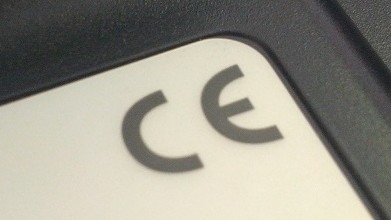Wow, after months and months it appears that there is still doubt and misinformation out there about the impending CE Marking. The Twitter discussions on Wednesday proved that, so, as asked by GGF President Mark Warren, I have been asked to write a post to try and help clarify a few things about it! The information I use in this post is what has been given to me, both in seminars and other online materials. I have tried to be as accurate as possible!
There has been some debate about who does or doesn’t need to be CE Marked. The simple answer is that CE Marking applies to everyone and everything. The only differences are that there are different levels of responsibility. For example, the installers that DON’T need to CE Mark products themselves are those which buy absolutely everything from the same supplier. However, the installer does have to make sure their supplier has made the correct declaration or performance (DoP) and that the CE Mark appears either printed or electronically somewhere on the product or packaging. It is also the responsibility of the installer to pass on copies of the CE certificates and DoP’s if no mark is on the product. Following?
Right then, the situation is slightly different for those installers who source their various products from various suppliers. Those who do so have to make their own DoP and CE Mark the products themselves. Providing the spec of the product doesn’t change, this is a one off process and doesn’t have to be repeated.
There has also been some talk about micro-enterprises. A micro-enterprise is defined as such as a business with less than 10 employees and a turnover of less than €2 million a year. But this does still not exempt you from CE Marking. All it allows you to do is to is sort out your DoP’s and CE Certificates without the need of consultants or notified test bodies. That is it.
According to Mark Warren: If an installer, whether a micro-enterprise of not, installs a door set, intended to be used as the final exit door on an escape route and is fitted with emergency exit or panic hardware, the door set and method of production will need to be inspected and approved by a notified product certification body.
For all those installers that produce their own CE marks and DoP’s, these must be made available to the customer either in paper format or make it available to download from their website (which is what I shall be doing for our company website).
I have tried to focus on the installations side of things with this post as this is where my knowledge is best. I’m am not totally sure on all the implications and do’s and don’t when it applies to suppliers and manufacturers. Ask Mark Warren, he’ll probably know!
What is slightly concerning that at the eleventh hour there are still so many rumours, questions and uncertainties about CE Marking. I fear that come July 1st there will be many that won’t be compliant. I wouldn’t worry too much though, like everything else in this industry, it will be very under-enforced and not much will be done to those who aren’t playing by the rules!
I have taken some information from here:http://markwarren3.wordpress.com/2013/06/17/just-some-basic-infoguidance-on-ce-marking-rules/ but you can also go here as well: http://www.ggf.org.uk/ce-marking-faqs
If you have any questions please leave a comment below and I will try my best to answer it!





Just one point about policing…. You’re right that there won’t be a sudden overwhelming inspection regime from Trading Standards, but they have been tasked to enforce this new law. I imagine that they will be spot checking some installers in their areas to confirm compliance. As in anything they will have some discretion on fines, but it will basically come down to two routes. 1. Has the Installer taken steps to comply like producing a DoP and is it easily visible and downloadable from their website. If so they may just give further advice about compliance. 2. Has the Installer… Read more »
I looks like you’re advice is aimed primarily at those who supply and install windows and doors for the residential market. I would add that it is my understanding that the ‘policing’ of CE Marking of all windows and doors will be undertaken by a single regional authority (believed to be Cambridgeshire). There is just as much confusion and misunderstanding with those who supply and install to the commercial market. Only a few days ago it came to light that a sales rep for a major aluminium systems supplier has been giving incorrect advice to some customers with regards to… Read more »